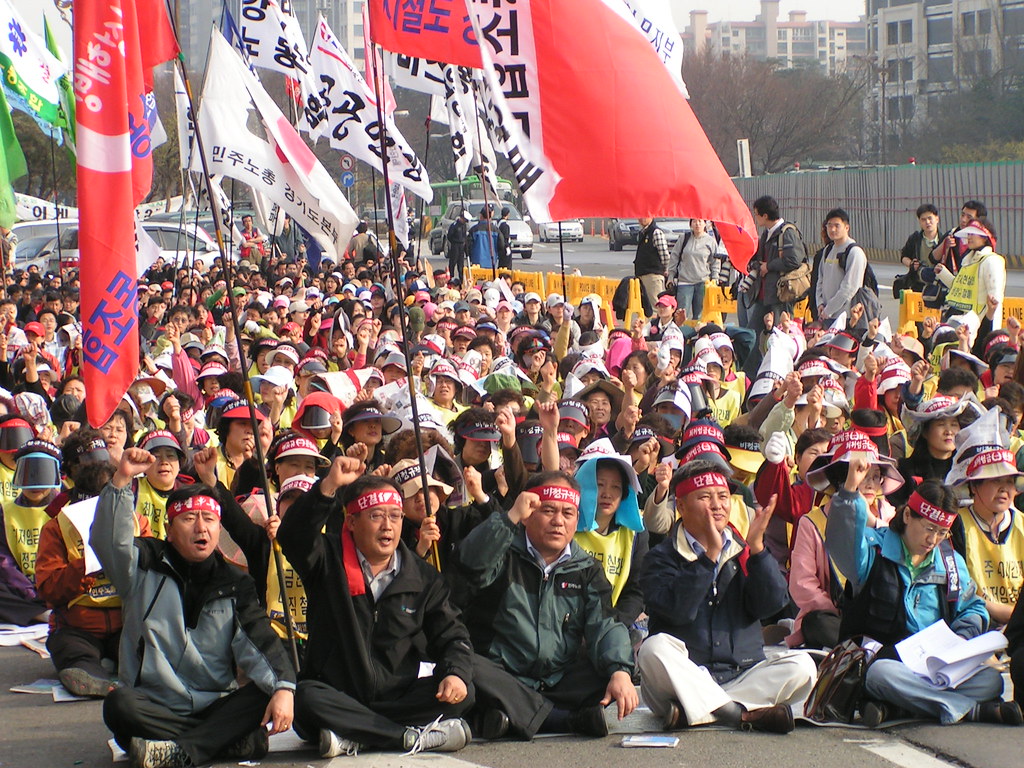The Peninsula
Successive Strikes Bring Attention to Public Sector Jobs

This briefing comes from Korea View, a weekly newsletter published by the Korea Economic Institute. Korea View aims to cover developments that reveal trends on the Korean Peninsula but receive little attention in the United States. If you would like to sign up, please find the online form here.
What Happened
- Irregular school workers across the country launched the first-ever general strike by public sector contract employees.
- Protesters demand greater job security alongside a pay raise that would bring their wages to 80% of that of the lowest-ranking civil servant.
- Other irregular public sector workers, including highway toll collectors and cleaners employed by local governments, also participated in the nationwide strike.
- The Korea Post branch of the Parcel Delivery Workers’ Solidarity Union also held a strike, demanding changes to a pay system focused on commission. This was the first instance of South Korean postal workers mobilizing in a general strike.
- Prime Minister Lee Nak-yon publicly recognized the frustrations of striking workers but noted that they lacked the budget to make rapid changes.
Implications: Focused on lowering unemployment figures, the Korean government has not yet mobilized sufficient political capital and economic resources to address challenges associated with irregular workers and their working conditions. This is particularly problematic for President Moon Jae-in because he had campaigned on the commitment to not only create 810,000 public sector jobs but also address wage suppression faced by irregular workers in both public and private sectors. Strikes last week by irregular public school employees and parcel delivery workers brought attention back to these unresolved issues. Recent labor activism also tempered the optimism that came with official government figures that showed that Korea added an average of 200,000 jobs every month to-date in 2019 (up from 97,000 in 2018). Prime Minister Lee’s response makes clear that the government is sympathetic to workers’ concerns – but with the administration constrained by a divided legislature and rising budget deficit, it is difficult to foresee a resolution in the near future.
Context: The focus on public sector employment is a symptom of broader economic anxiety. As competition in the labor market intensified, job seekers have looked to employment with the government as a more secure career path. Simultaneously, the Korean government employs far fewer people in the public sector than its OECD peers. In 2015, the government employed 7.6% of total people in the labor force while the OECD average stood at 18.1% (15.3% in the United States). Fiscal considerations constrain the Korean government’s ability to raise this figure. Tax hikes face opposition in the National Assembly and many voices caution that such a move could lead to lower private sector investment.
Korea View is edited by Yong Kwon with the help of Yusong Cha, Stephen Eun, Taehwa Hong, and Emily Gibson.
Picture by user rable from Flickr
